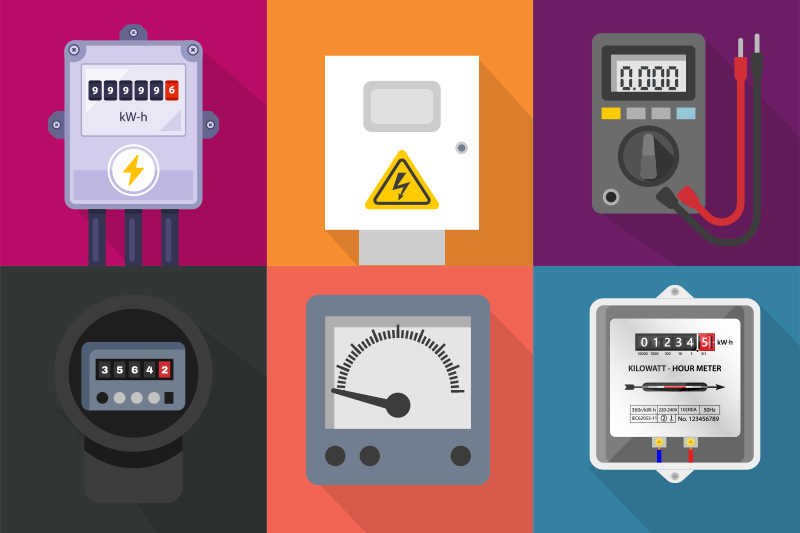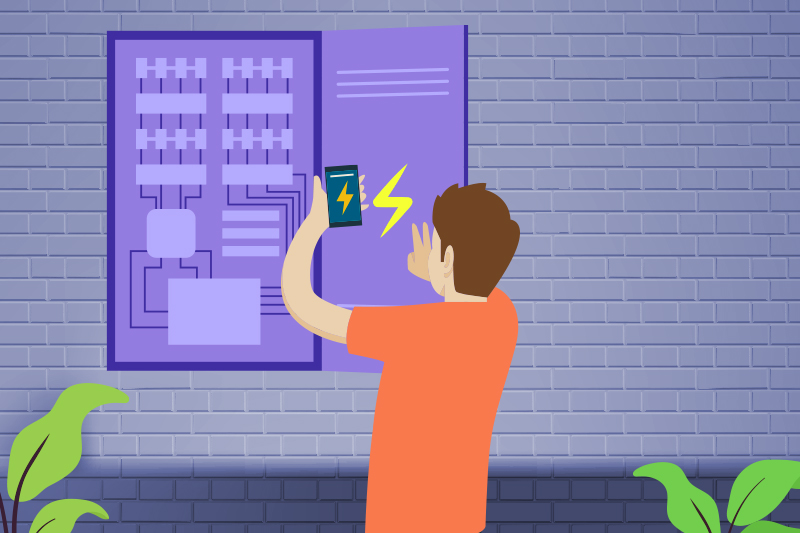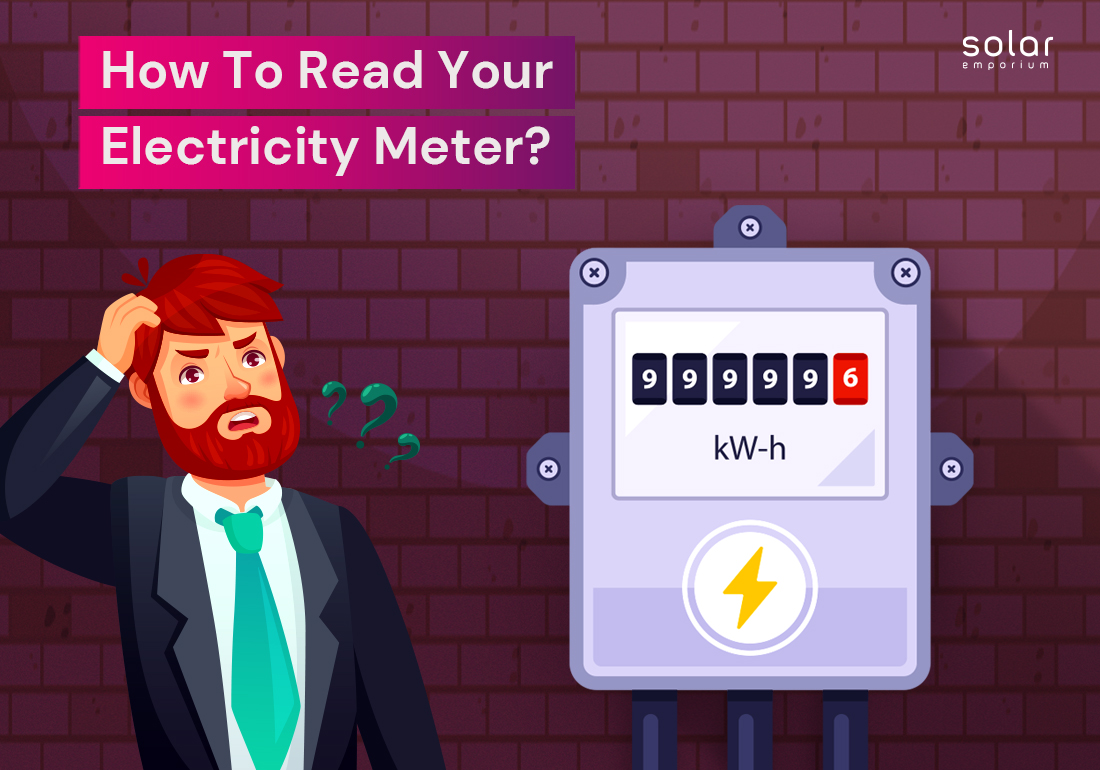Electricity meters quietly check how much electricity we use in our homes and offices. They help make sure we get the right bills from your retailer.
Knowing how to read your electricity meter is important if you live in Australia and want to manage your energy better. Today, we’ll explain how to do that in Australia. This will help you watch how much energy you use and choose smart ways to save energy.
Your electricity meter records your energy bills. With an electric meter, you can enjoy and understand Australia’s peak and off-peak electricity system.
You will only encounter varying peak and off-peak electricity rates if you have opted for a ‘time of use’ or ‘flexible pricing’ tariff. This selection requires the installation of a smart meter at your property.
Opting for a time-of-use tariff should result from a discussion with your energy retailer, primarily if it appears financially beneficial. Solar panels would be the best option to reduce your bill even further.
Functions of An Electric Meter
Meters track the amount of electricity or gas consumed at your specific location. Your meter service provider or distributor reads your meter and provides us with the data, which we then use to determine your energy bills.
Various kinds of meters are available to measure and show your usage. Each type of meter captures and exhibits information in its unique way. If you live in a flat or a densely populated housing area, you might not have direct access to your meter.
Importance of Reading Your Electricity Meter?
Let’s explore the reasons behind this:
Accurate Billing: Your electricity provider relies on the data from your meter to calculate your energy usage. Reading your meter ensures you are billed correctly and don’t pay more than you should.
Monitor Energy Usage: When you read your electricity meter, you can keep track of how much energy you use on a daily, weekly, or monthly basis. This information can help you spot opportunities to save energy and make well-informed decisions about your electricity consumption.
Budgeting: Understanding your energy consumption allows you to budget for your electricity expenses more effectively. You can plan for periods when you expect to use more energy and find ways to reduce your energy costs.
Detecting Issues: Regular meter readings can help you identify unusual spikes in energy usage. These anomalies could indicate problems like equipment malfunctions, energy theft, or other issues that require immediate attention.
Types Electricity Meters

Smart Electricity Meters
These are digital meters that instantly measure electricity usage. They transmit this information to electricity companies and distributors. This helps in more precise customer billing and details their energy usage.
These meters are being introduced across all states and territories in Australia. In Victoria, they are obligatory for all homes and businesses. In other states, they’re optional, but many retailers now provide them to their customers.
Basic Meters
Digital Display Meter
This meter is a basic model featuring a digital display. Note that, despite its digital appearance, the pictured meter type cannot be read remotely.
Record all the numbers visible from left to right for meters with digital displays. Disregard any numbers following a decimal point, as only whole numbers are considered.
Odometer Display Meter
Odometers can show up to three rows of numbers. Include any leading zeros in your reading. Record the lower of the two when a dial falls between two numbers.
Are you observing multiple sets of numbers? Read and document each set separately—these may correspond to peak, off-peak, or shoulder readings.
Clock Display Meter
Electricity cyclonic dial meters
Read the meter from left to right, encompassing all leading zeros. When a dial seems to fall between two numbers, note the lower number, except if it falls between 9 and 0, where you should record 9.
If your meter has two readings labelled as L and H, kindly read both from left to right. If your meter falls under this type, please provide both numbers.
How Can You Read Your Electricity Meter?
Electricity Meters With Clock Display
Observe the dials from left to right. The first dial logs the consumed electricity in whole units, the second dial in tenths, and the third in hundredths.
If a dial falls between two numbers, the lower of the two should be recorded, except when it’s between 9 and 0, where you’d note down 9.
The clock-like display exhibits the current time, monitoring electricity consumption trends.
Electricity meters with clock-like displays belong to the traditional accumulation meter category and are still operational in some regions of Australia. These meters feature multiple dials tracking energy usage, some incorporating a clock-like display.
Electricity Meters with an Odometer Display
The meter can be read sequentially from left to right, encompassing any leading zeros. When a dial is positioned between two numbers, record the lower number, except if it falls between 9 and 0, in which case, note down 9.
Please read both values on your meter, L and H, from left to right. If your meter follows this format, kindly provide both readings.
Digital Electricity Meter in Australia is the Most Popular
Press the’ Display’ button to view the various reading options on the screen. It may require multiple presses to navigate to the desired screen.
Ensure all numbers displayed, including any leading zeroes, are noted down.
For guidance on which screen to access, refer to the setup reference manual accompanying the meter, if available.
The screen image depicts the small number ’03’. This indicates panel number 3, which shows the total kWh consumed. Disregard these numbers from your reading. Exercise caution not to press the ‘Boost’ button if it is present on your meter.
kWh On Your Meter
Your meter records how much power you use in kilowatt-hours (kWh) over time. In layman’s terms, one kilowatt-hour equals 1,000 watt-hours.
The energy pricing can vary depending on your plan and the demand – the average rate at which your home consumes electricity at a given time.
Meter Reading Tips

Outlined below are crucial guidelines for accurately interpreting your electricity meter:
Consistent Recording: It’s important to consistently read your meter at the commencement and conclusion of each billing cycle. This practice ensures a reliable record of your energy usage.
Understanding Tariffs: Familiarise yourself with your tariff structure as it directly impacts your billing. Some households have varied rates for peak and off-peak hours.
Unusual Spikes: Any sudden or unexpected increase in energy consumption could signify a potential leak or malfunctioning appliance. Investigate any unexplained surges in usage.
Maintain Records: A comprehensive log of your meter readings over time enables you to monitor patterns and pinpoint areas where energy consumption can be minimised.
Seeking Assistance: If you encounter challenges reading your meter, do not hesitate to contact your electricity provider or consult a professional electrician.
Location of Your Electricity Meter
The positioning of electricity meters in Australia can vary based on the property’s age and the layout of power lines.
Typically, the meter is situated indoors in older properties, often in the hallway or laundry area.
However, newer properties are more inclined to place their meters outside, typically on an external wall.
In some instances, meters may also be found in areas such as the basement, garage, or porch for those residing in multi-dwelling buildings.
The meter might be placed in a cabinet on your floor, while in New South Wales (NSW) specifically, it could be located under the kitchen sink.
These are some of the most common locations for electricity meters in Australia:
- External wall attachment outside the property.
- Interior positioning within the house, often in the hallway or laundry area.
- Basement placement.
- In the garage.
- On the porch.
- Within a cabinet on your floor (for multi-dwelling buildings).
- Under the kitchen sink (specifically in NSW).
If you’re having trouble finding your electricity meter, you can seek assistance from your electricity retailer. They can guide you to locate your meter and provide support for reading it.
National Electricity Market rules

The National Electricity Rules oversee the functioning of the national electricity market (NEM).
These rules are established and modified by the AEMC (Australian Energy Market Commission) under the National Electricity Law, carrying the weight of legal authority.
The AEMC typically manages amendments, although in specific cases, the South Australian Minister for Energy and Mining, responsible for the AEMC, may undertake alterations via the Energy National Cabinet Reform Committee (ENCRC).
When formulating these rules, the AEMC is legally bound to adhere to the National Electricity Objective. These regulations primarily ensure that market participants comprehend their entitlements and obligations.
Additionally, they enforce appropriate oversight to prevent consumers from overpaying for their electricity.
The rules encompass several vital areas governing the wholesale electricity market, encompassing market arrangements from electricity producers (generators) to retailers.
They also regulate the economic aspects of monopoly transmission and distribution networks. Moreover, they oversee the management of power system security by the Australian Energy Market Operator (AEMO).
Rules:
- Oversee the functioning of the wholesale electricity market, managing the commercial transactions of electricity from generators to retailers.
- Regulate the economic aspects of monopoly transmission and distribution networks.
- Govern the procedures employed by the Australian Energy Market Operator (AEMO) in handling power system security.
- Apply to the electrically connected states and territories like Queensland, NSW, ACT, Victoria, South Australia, and Tasmania.







